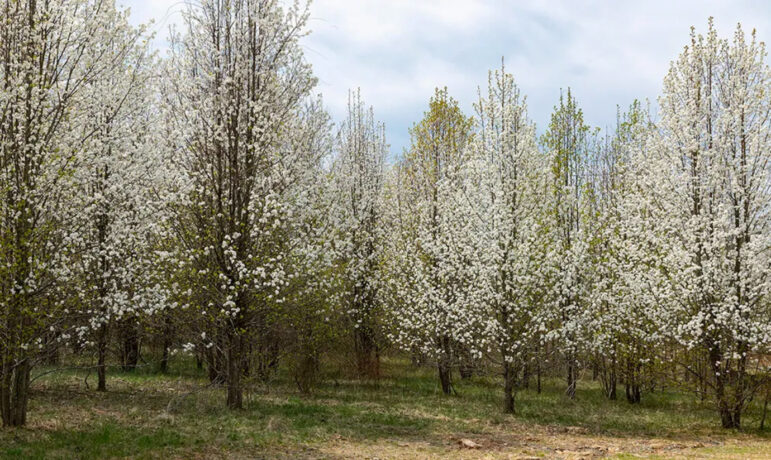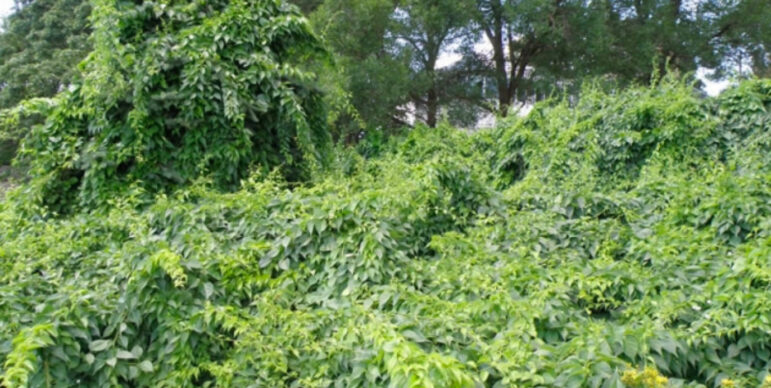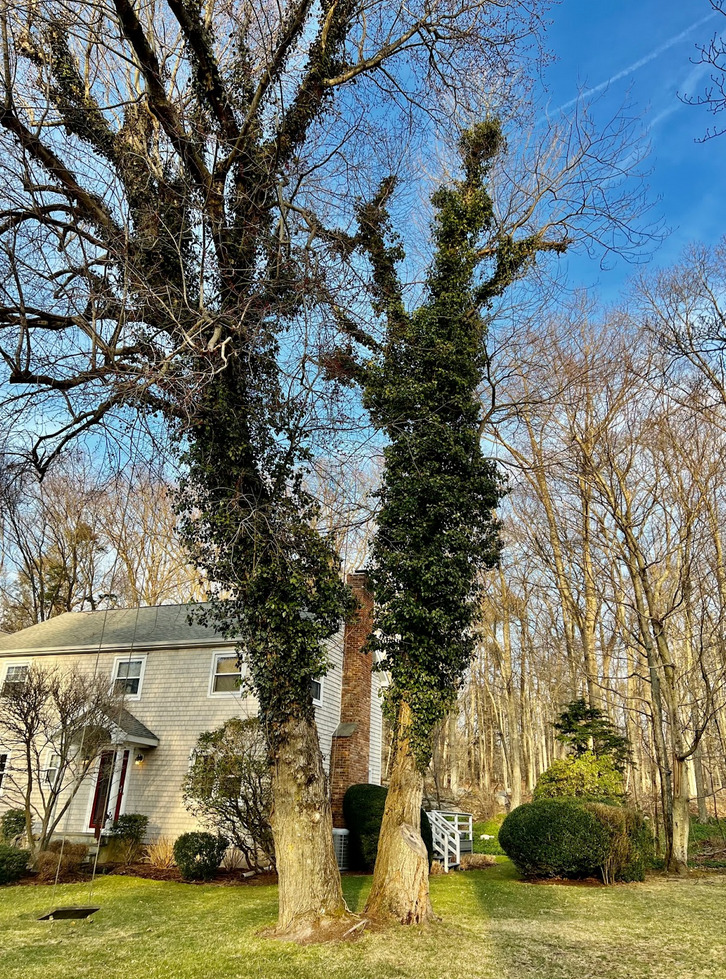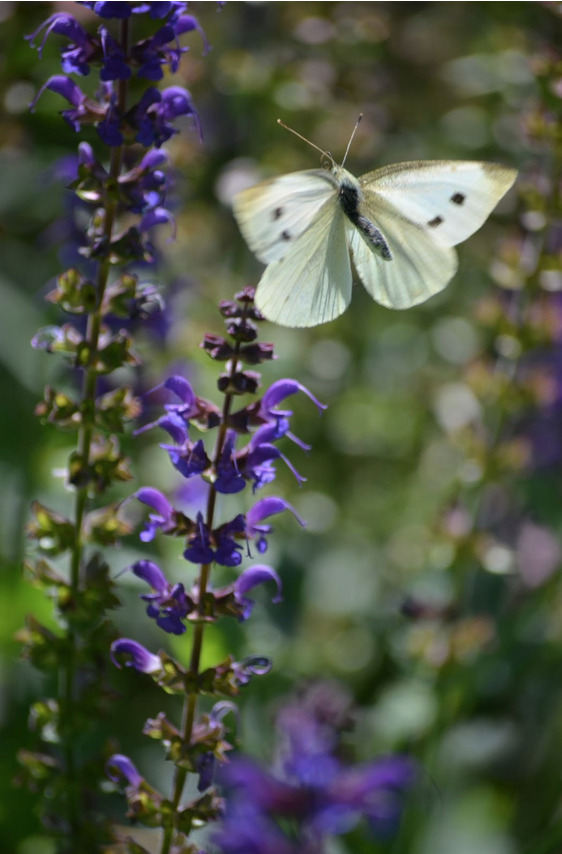Written by Svetlana Wasserman
Second in Greenwich Sustainability Committee’s One Land Series on Biodiversity
As Europeans began to settle the New World, they brought with them germs from domesticated animals and germs that thrived in dense, semi-urban populations. After thousands of years of exposure the European genome evolved a resistance to most of these germs. The indigenous people of the Americas had not. Their sudden simultaneous exposure to smallpox, measles and flu did not give them enough time to develop immunity, and an estimated 90% of Native Americans were killed from these invasive diseases.
A different kind of invasive species is ripping through our nation’s natural ecosystems, taking over the landscape and crowding out our native plants. Consider the story of the Bradford pear tree, a staple of suburban homes since the 1960s, which is native to East Asia. The Bradford pear is much prized for its ability to grow in almost any soil, its appealing shape, and dazzling white flowers appearing in early spring. However, the trees’ uncanny ability to take root anywhere is what has allowed it to colonize every area where its seeds land. “When this tree gets growing somewhere, it does not take long to take over the whole thing,” Professor David Coyle, an invasive species expert at Clemson University, said. “It just wipes everything out underneath it.”

The Bradford pears began colonizing open fields, farmland, and highway edges, crowding out native species and upending ecosystems. Although the Bradford pear had been billed as sterile, that was not exactly so. Two Bradford pears cannot reproduce, but they could cross-pollinate with other pear trees, and their seeds are spread widely by birds, much like the ubiquitous Ailanthus and the Norway maple.
Like these trees, a Bradford pear is not the ecological equivalent of a native tree. Insects have co-evolved with their host plants for thousands of years, and cannot just switch over to a new plant overnight. Entomologist Douglas Tallamy studied insect populations on two species of trees — native white oak and non-native Bradford pear. He found 410 caterpillars of 19 different species on the oak tree and only one caterpillar on the pear tree. For birds and other animals that rely exclusively on caterpillars to feed their young, trees like the Bradford pear are a food desert, and they are crowding out the native trees and plants that our wildlife has depended on for thousands of years for their survival. We are seeing plummeting bird populations, a key indicator for all wildlife, in steep decline.
Of course, Bradford pears are not the only problem tree or plant. Many invasive plants, like barberry and Burning bush, Japanese knotweed, multiflora roses, bittersweet, wisteria, Japanese stiltgrass, kudzu, lesser celandine, garlic mustard, mugwort, and porcelain berry to name only a few, start out as charming exotic garden additions that spread wherever wind or bird droppings take them, and drive out our native plants. Our native plants cannot compete against the evolutionary advantage of exotic plants bred in distant lands against different predators. Because our insects have not evolved to eat these foreigners, the exotic species are left undisturbed by deer, rabbits, or insects. As a result, the services our native stock provides diminish and all wildlife suffers.
If you’ve looked out a car window recently or taken a hike, you may have seen a jungle-like wall of green like that pictured below. These are our alien invaders, and forest managers can no longer control them without also killing the natives beneath them.

Many of these alien invaders are visible in the winter landscape. Burning bush has wings running up and down its stems. These shrubs form dense groves in our woodlands from just one plant! Bittersweet vine wraps around tree trunks and branches effectively strangling trees. English ivy scrambles up trees and weighs them down, eventually killing them. Japanese barberry creates dense thorny thickets that crowd out natives and they harbor Lyme disease carrying ticks. None of these invasive plants are browsed by deer, which puts even more pressure on our native plants.

The good news is that we can make a difference in our own backyards. Eighty-six percent of land east of the Mississippi river is privately owned. If even a portion of these landowners removed invasive plants from their properties we would have a much more diverse and productive landscape. Nature is resilient, and with a little help from us it can recover and regenerate itself. Follow these three simple steps:
- Add natives to your gardening stock. There are numerous databases where you can enter your zip code to get a list of plants native to your area, such as Audubon’s, and there are many nurseries that stock them. If you can convert a section of your lawn into a native planting bed, you will be handily rewarded with the flocks of pollinators and hummingbirds. Natives have the added advantage of needing less water, fertilizer or pesticides because they are adapted to survive in our growing conditions.

- Remove invasive plants that are taking hold in your yard. You can familiarize yourself with common invasive species on Greenwich’s Conservation Department web page or numerous online sources that provide images, descriptions and removal instructions.
- Spread the word. For decades, our suburban gardens have become more or less identical to our neighbors’. Use your experience with native plants to help educate neighbors and friends about the power we have to create a beautiful living oases and restore native habitat with our landscaping choices.
Please look out for the next article in our series, “Trees, the Lifeline of the Landscape: How trees increase biodiversity, mitigate a changing climate and make our lives better.”
See also:
One Land: The grass isn’t always greener. How our obsession with lawns turned toxic.
Sustainability Committee to Launch “One Land” Series on Biodiversity